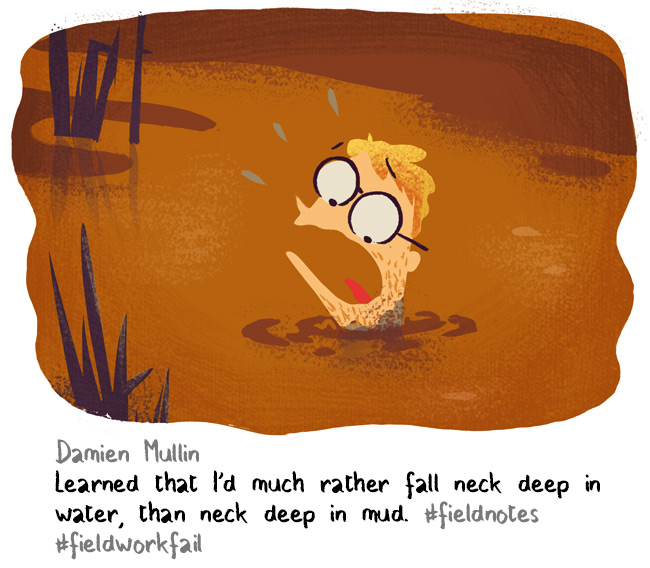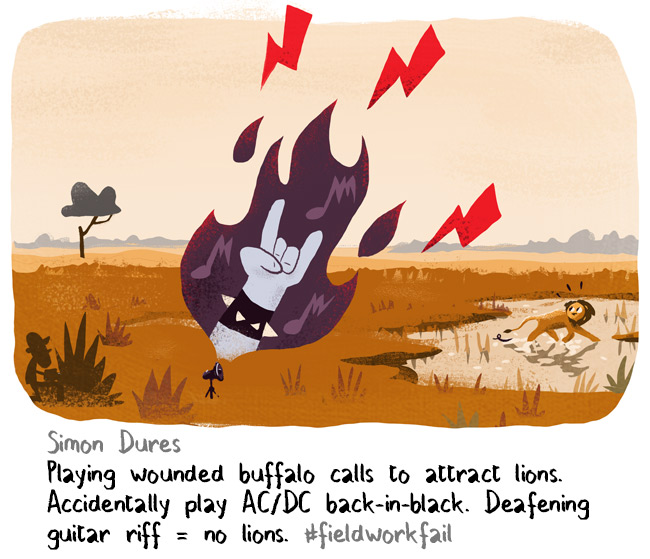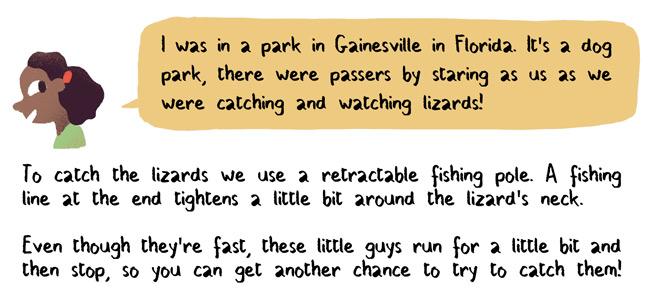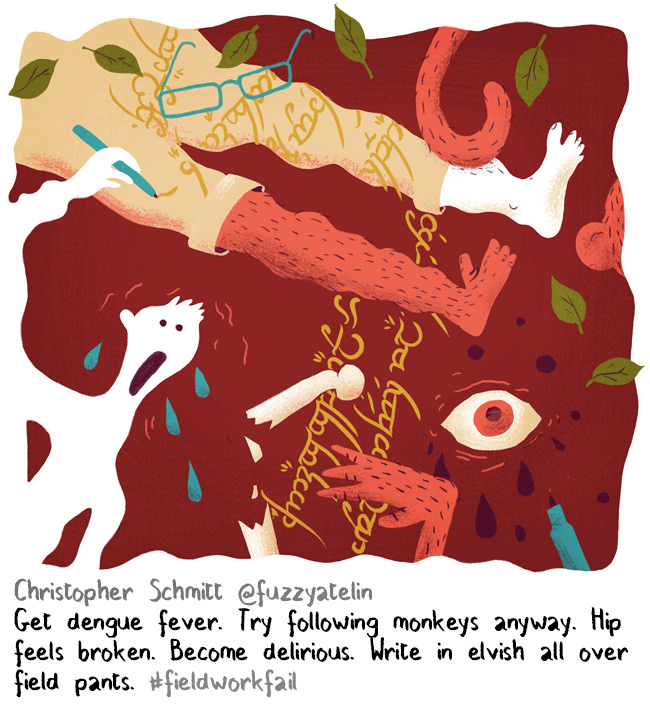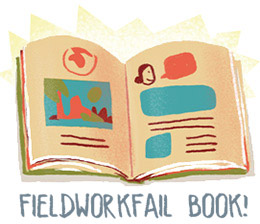Fieldwork Fails have started to be shared on Twitter, but more and more frequently, someone contact me to share his/her story.
So I invite you to share your own story here, if you have one, in the comments!
(more…)
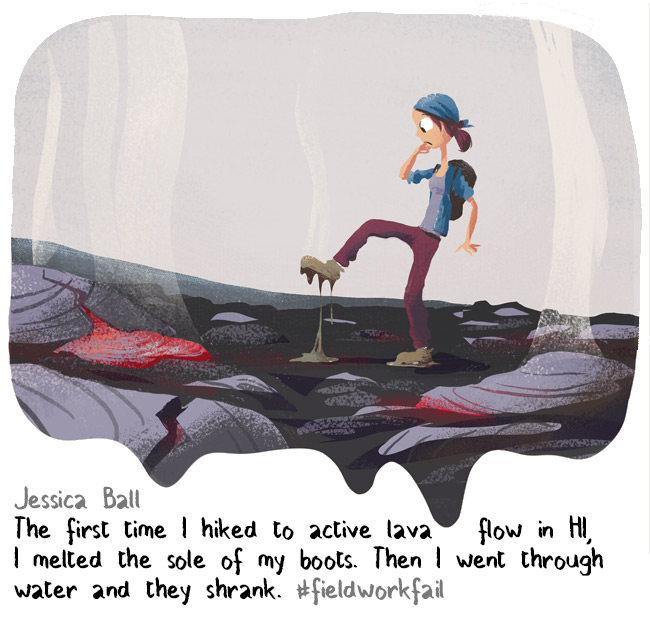
I was in Kilaeua National Park, a couple of miles past the end of Chain of Craters road (it’s where the active lava flows show up right before they enter the ocean).
We had quite a few melty boots on that trip (one woman was wearing hiking sneakers that didn’t fare well at all). It tends to happen when you stand in one place too long, although you can usually feel the heat before they get TOO melty…
The heat from the lava is incredible, but it’s also a good warning to keep off. And the newest, barely-cooled lava flows look and sound different from the cooler ones – they have a sort of iridescent sheen to them and as they cool, little bits of glass crack and pop off their surfaces. It’s like listening to some kinds of breakfast cereal when you’ve just poured milk on.
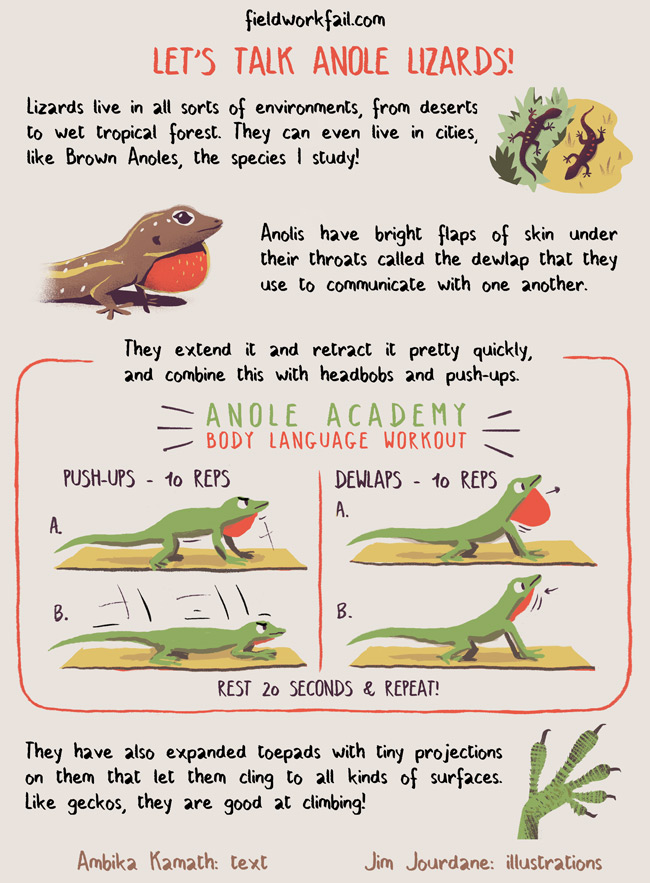
-> If you are curious about lizards, here is a video of anole lizards communicating with their dewlaps!
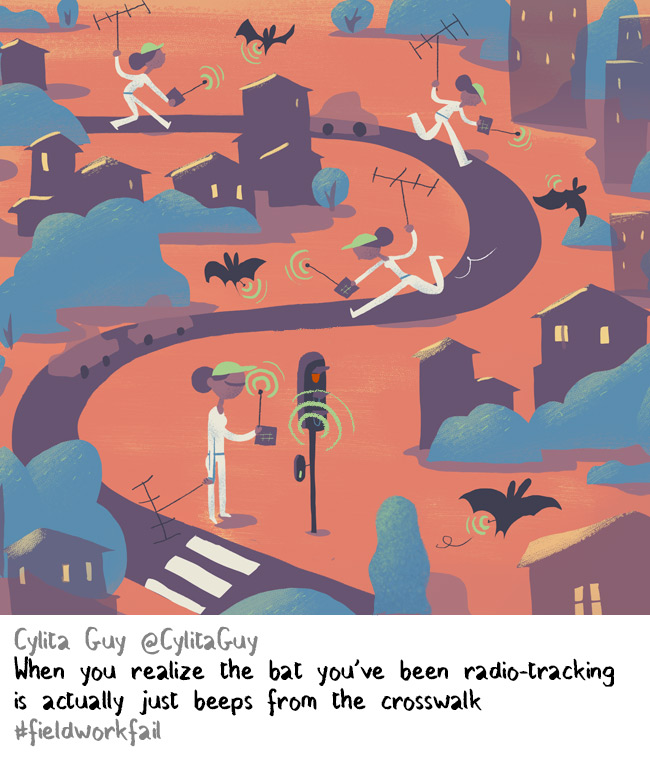
I was tracking bats in residential areas near Toronto’s High Park. We try to understand how bats use space in urban environments. Mainly where they feed at night and where they roost (bat resting location) during the day. Understanding how wildlife use space in urban environments may help us to plan networks of green spaces better in the future. Importantly it helps us understand if wildlife are even using existing green spaces in the way we think they are!
This week, with Cylita Guy we’ll talk a little bit about what she studies – Bats!
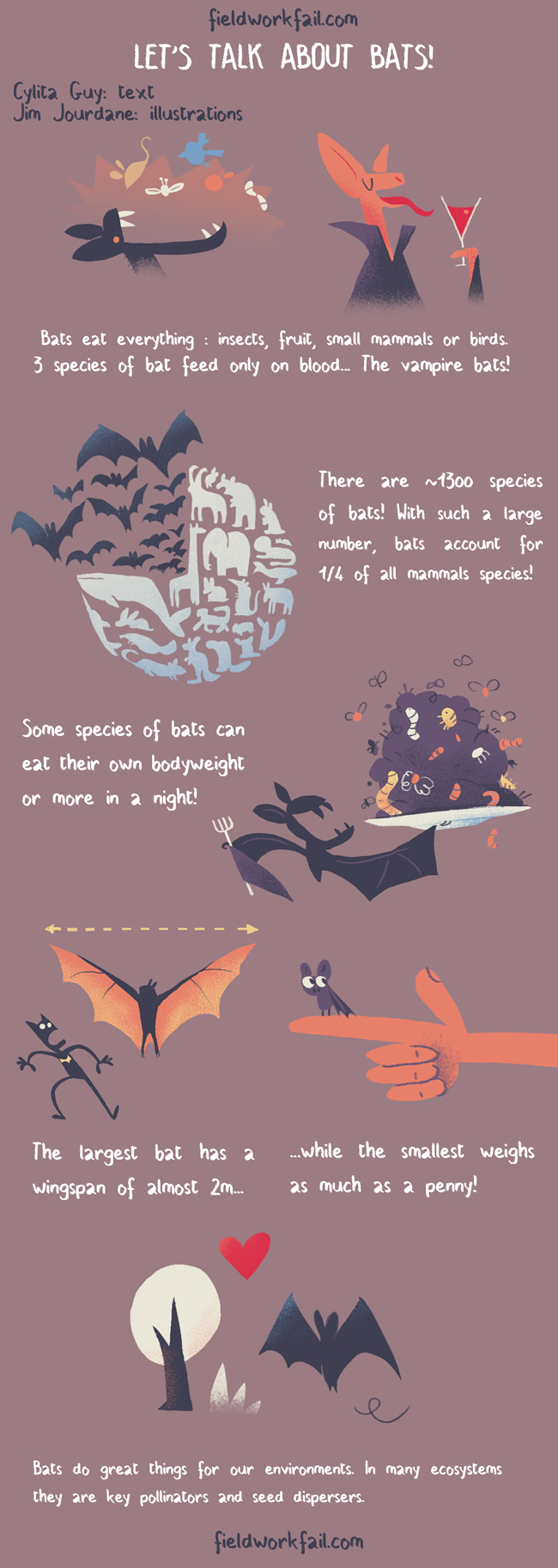
All these illustrations are made for the Fieldwork Fail book, now on Kickstarter!
Would you be interested by an illustrated book about FieldworkFail ? Discover the project here!
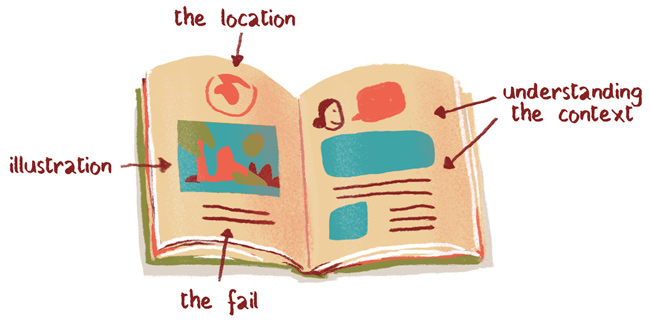
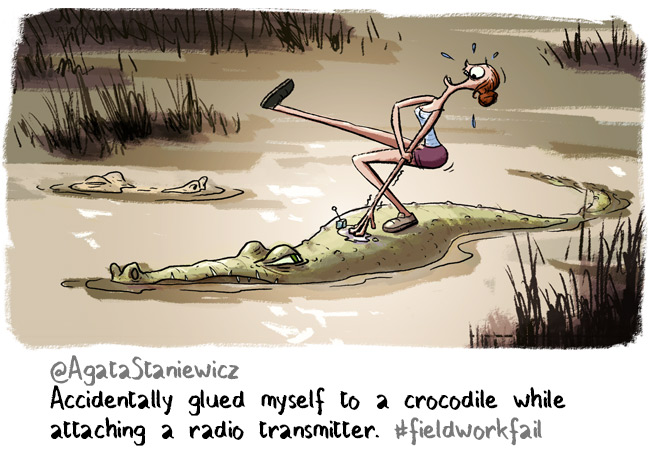

3 questions to Agata:
Can you explain what was your job about and why did you need to glue crocodiles ? 🙂
It was part of the research for my MSc in Biology – I’m now about to start a PhD. We were trying to find out the range size of crocodiles in Indonesian Borneo. It lets us know the habitat range the crocodiles need, and how they might interact with other species in the area (including other crocodile species).

What happened after the hand glued ?
10 minutes of me detatching my finger from the crocodile without detaching the transmitter while the fishermen watched and laughed.
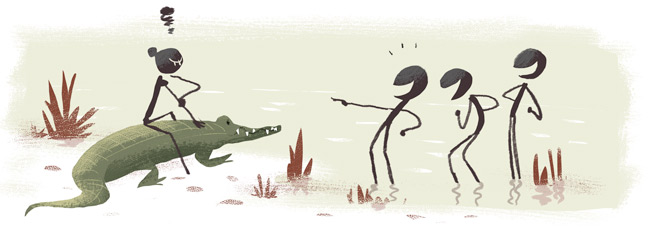
Then the croc lost the transmitter within 24 hours 🙁
Isn’it dangerous to glue things on crocodiles by hand ?
I suppose it is, especially if you’re not very good with handling the glue. I first catch the crocodiles and make sure their mouths are closed and secured (usually with tape or in case of a smaller croc, a rubber band). I also cover their eyes to reduce the stress experienced by the animal.
Someone also needs to hold the croc down (or sometimes sit on it, when it’s bigger) to make sure it doesn’t thrash around or roll. The crocs aren’t sedated or sleeping, so we just need to take all the measurements, mark the crocs and attach the transmitters as quickly as possible.
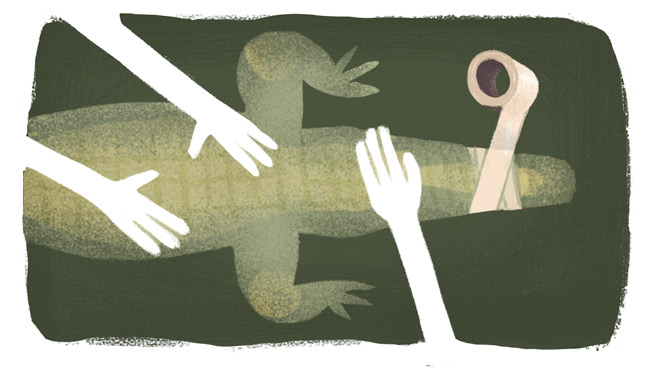
Are crocodiles in danger in Borneo ?
Some of them for sure. The two species I worked on, Siamese crocodiles (Crocodylus siamensis) and Sunda gharials (Tomistoma schlegelii) are Critically Endangered and Vulnerable, respectively.
Thanks Agata!

